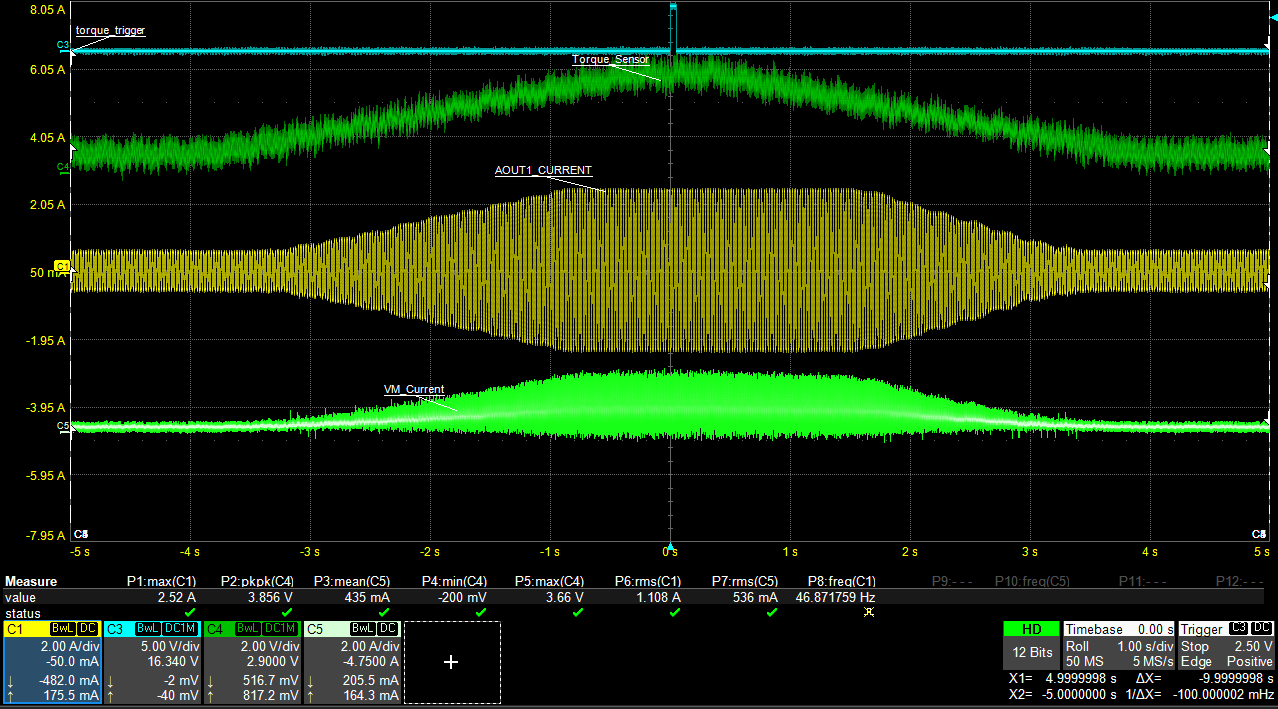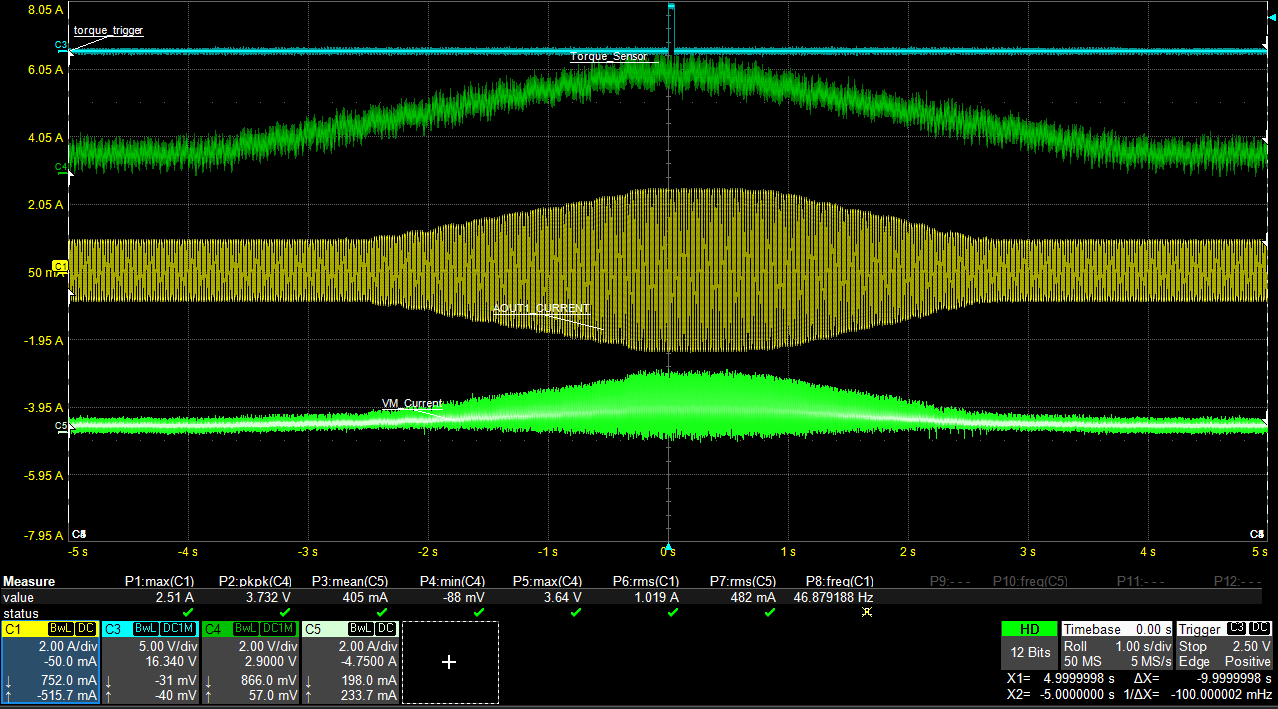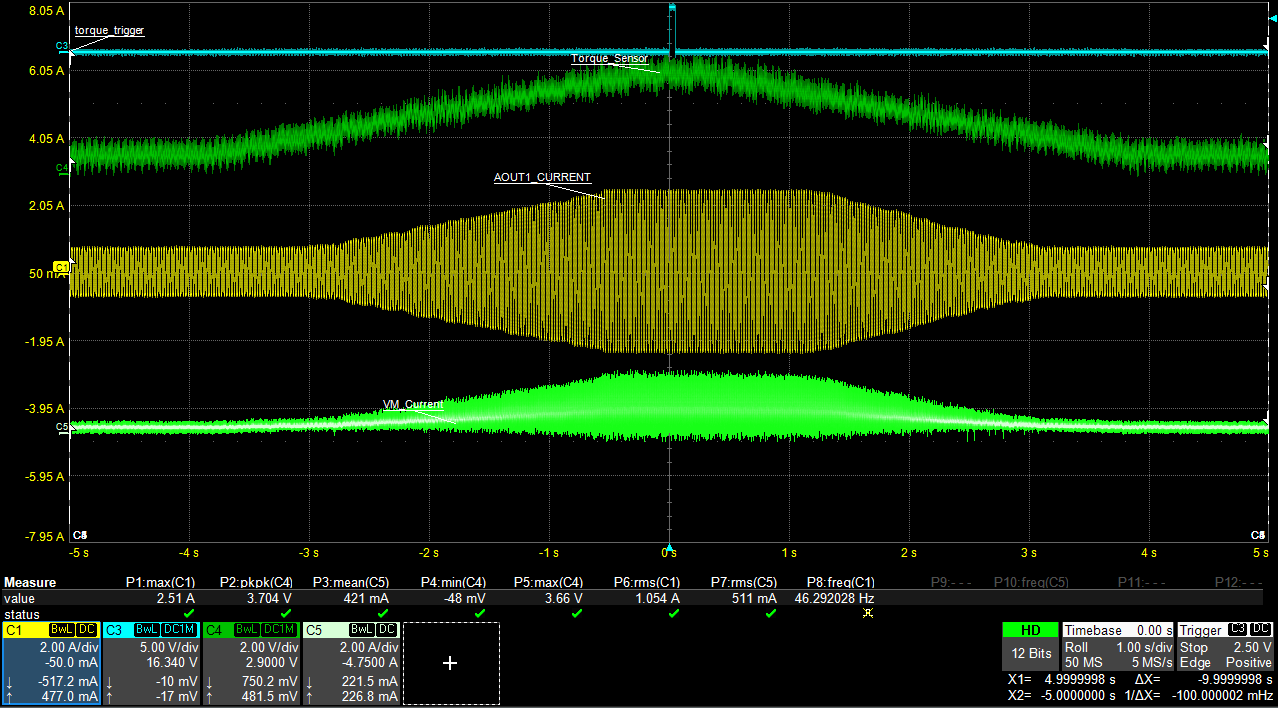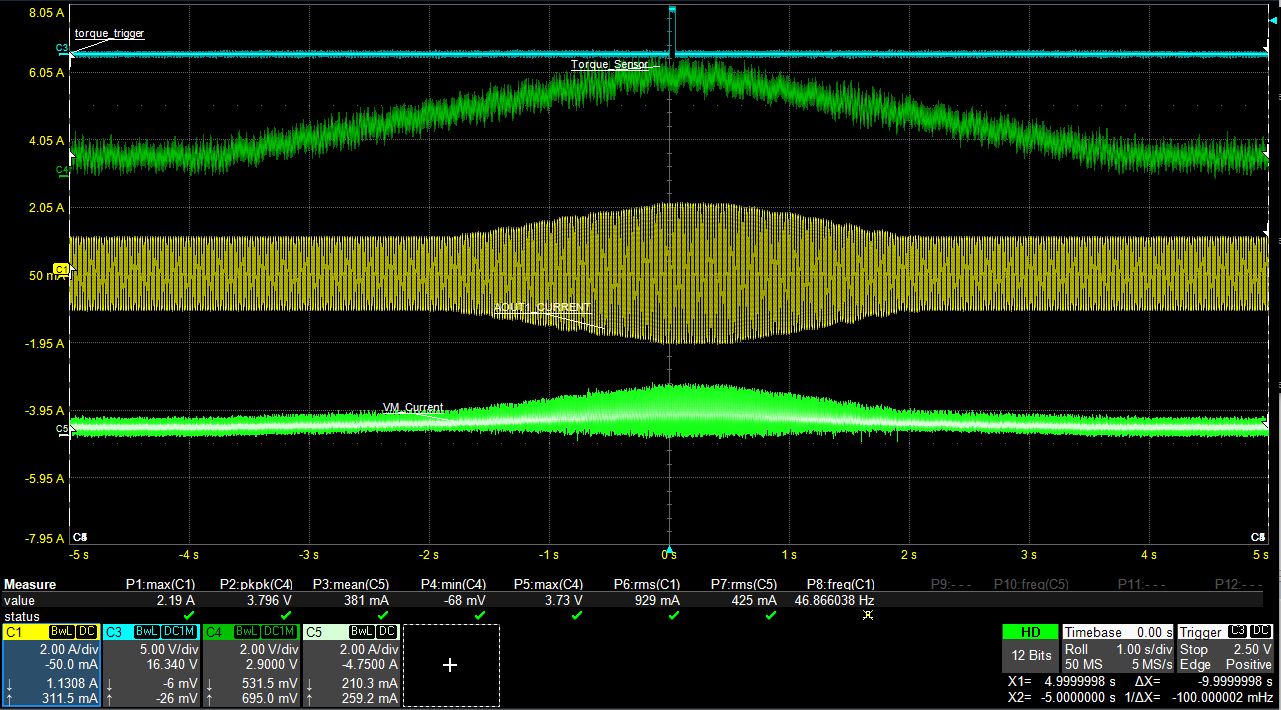SLVAFF1 January 2023 DRV8452 , DRV8462
PRODUCTION DATA
- Abstract
- Trademarks
- 1Power Efficiency of Stepper Motor Drivers
-
2Auto-Torque
- 2.1 Auto-Torque: Learning Principle
- 2.2 Current Control
- 2.3 PD Control Loop
- 2.4
Impact of Auto-Torque Tuning
Parameters
- 2.4.1 Impact of Learning Parameters on Load Transient Response
- 2.4.2 Impact of ATQ_UL, ATQ_LL Hysteresis
- 2.4.3 Impact of Load Profile on Power Saving
- 2.4.4 Adaptive ATQ_UL, ATQ_LL
- 2.4.5 PD Parameter Dependency Curves
- 2.4.6 ATQ_CNT at Different Motor Speeds
- 2.4.7 ATQ_CNT at Different Supply Voltages
- 2.4.8 Motor Temperature Estimation
- 2.5 Efficiency Improvement With Auto-Torque
- 3Case Studies
- 4Summary
- 5References
2.4.1 Impact of Learning Parameters on Load Transient Response
As mentioned in Section 2.2.1, the choice of ATQ_TRQ_MIN and ATQ_UL influenecs how the control loop responds to load torque transients. This is shown in Figure 2-8 to Figure 2-11.
For all the following traces, from top to bottom: load torque, coil current, supply current:
 Figure 2-8 ATQ_TRQ_MIN =
0.6 A, ATQ_UL = 40
Figure 2-8 ATQ_TRQ_MIN =
0.6 A, ATQ_UL = 40 Figure 2-10 ATQ_TRQ_MIN =
0.93 A, ATQ_UL = 50
Figure 2-10 ATQ_TRQ_MIN =
0.93 A, ATQ_UL = 50 Figure 2-9 ATQ_TRQ_MIN =
0.74 A, ATQ_UL = 45
Figure 2-9 ATQ_TRQ_MIN =
0.74 A, ATQ_UL = 45 Figure 2-11 ATQ_TRQ_MIN =
1.2 A, ATQ_UL = 60
Figure 2-11 ATQ_TRQ_MIN =
1.2 A, ATQ_UL = 60
- In Figure 2-8, with lowest ATQ_UL, the motor current reaches ATQ_TRQ_MAX earlier than the other settings. This setting therefore saves the least amount of power, though it has the quickest response time for fast load torque transients.
- In Figure 2-11, the motor current takes long time to increase. This setting saves the most power, but has the slowest response to load torque transients.